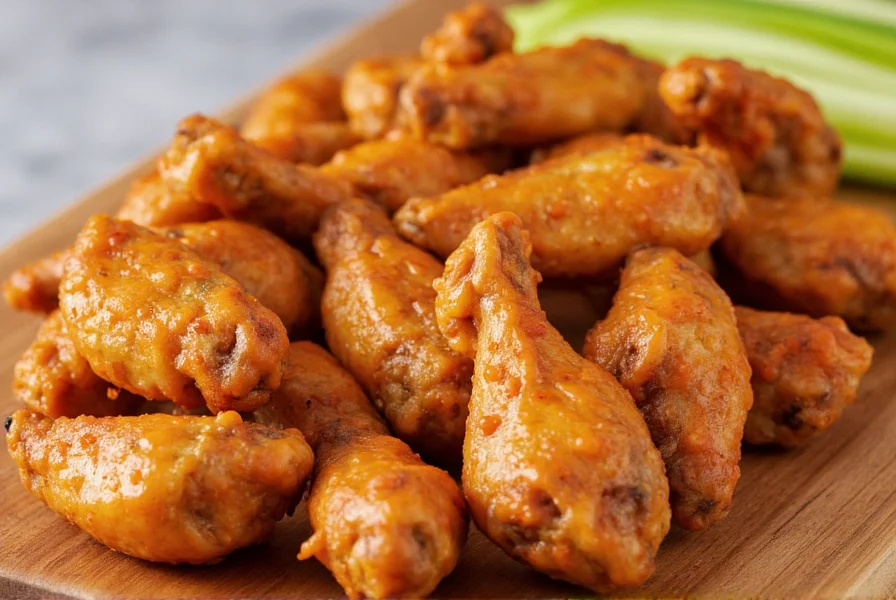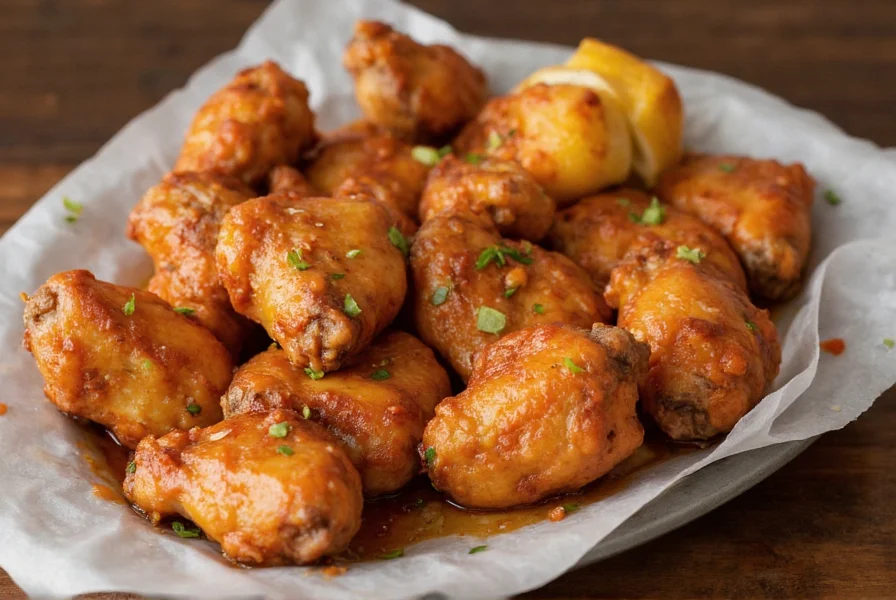For chicken wing enthusiasts seeking that perfect balance of zesty citrus and bold pepper flavor, wet lemon pepper wings deliver an irresistible combination. Unlike their dry-rub counterparts, these wings feature a glossy, sauce-based coating that penetrates the crispy skin while maintaining texture. The magic happens when the right ratio of fresh lemon components meets properly cooked wings.
The Science Behind Perfectly Sauced Wings
Creating genuinely crispy wet lemon pepper wings requires understanding food science principles. When sauce meets hot wings, moisture transfer occurs. The key is applying sauce at the optimal temperature window—typically between 165-185°F (74-85°C)—when the wings' surface moisture has evaporated but the skin remains porous enough to absorb flavors without becoming soggy.
Professional kitchens achieve this by either double-frying wings or using a specific baking technique with convection settings. The initial cooking phase renders fat and creates micro-cracks in the skin, while the final high-heat blast re-crisps the exterior after saucing. For home cooks, an air fryer set to 400°F (204°C) for the final 5 minutes works wonders for restoring crispness after saucing.
Essential Ingredients for Authentic Flavor
The foundation of exceptional wet lemon pepper wings lies in ingredient quality and balance. While recipes vary, these components form the backbone of authentic flavor:
| Ingredient | Function | Professional Tip |
|---|---|---|
| Fresh lemon juice | Acidity and brightness | Use Meyer lemons for sweeter profile |
| Lemon zest | Intense citrus aroma | Zest before juicing for maximum oil extraction |
| Freshly cracked pepper | Complex heat profile | Mix black and white peppercorns for depth |
| Unsalted butter | Sauce cohesion | Clarified butter prevents sauce separation |
| Garlic powder | Umami foundation | Toast powder before adding for enhanced flavor |
Step-by-Step Preparation Guide
Follow this method for restaurant-quality wet lemon pepper wings at home:
- Prep wings properly: Pat wings completely dry with paper towels. Toss with 1 tablespoon cornstarch per pound of wings to enhance crispness.
- Initial cooking: Bake at 375°F (190°C) for 45 minutes on a wire rack, flipping halfway. Alternatively, air fry at 375°F for 25 minutes.
- Final crisping: Increase temperature to 425°F (218°C) and cook 10-15 minutes until golden brown and crispy.
- Prepare sauce: While wings cook, combine 1/2 cup lemon juice, 2 tablespoons zest, 1/4 cup melted butter, 2 tablespoons cracked pepper, 1 teaspoon garlic powder, and 1/2 teaspoon salt in a bowl.
- Sauce application: Toss hot wings in sauce immediately after cooking. For optimal results, use a 3:1 wing-to-sauce ratio.
- Final crisping: Return sauced wings to oven for 5 minutes to set the glaze without compromising crispness.

Avoiding Common Mistakes
Many home cooks encounter issues with wet lemon pepper wings. Understanding these pitfalls ensures success:
- Soggy wings: Caused by applying sauce to wings that haven't reached proper internal temperature (165°F/74°C) or using too much sauce. Solution: Ensure wings are fully crisped before saucing and use measured ratios.
- Bland flavor: Often results from using bottled lemon juice instead of fresh. Fresh lemon provides volatile oils that bottled versions lack.
- Sauce separation: Occurs when butter and lemon juice emulsify improperly. Solution: Temper the lemon juice by slowly adding to melted butter while whisking vigorously.
- Uneven coating: Tossing wings in a bowl creates inconsistent coverage. Professional technique: Use a wide, shallow pan and gently fold wings through sauce.
Variations for Different Palates
While traditional wet lemon pepper wings satisfy most palates, these adaptations cater to specific preferences:
- Extra tangy version: Add 1 tablespoon white wine vinegar to the sauce for heightened acidity that cuts through richness
- Spicy kick: Incorporate 1/2 teaspoon cayenne pepper or 1 minced serrano pepper into the sauce base
- Honey-lemon fusion: Blend 2 tablespoons honey with the lemon components for balanced sweet-tart profile
- Herb-infused: Stir in 2 tablespoons finely chopped fresh herbs (thyme, parsley, or chives) after saucing

Serving Recommendations
Wet lemon pepper wings pair beautifully with complementary sides that balance their bright, peppery profile:
- Cooling dips like ranch or blue cheese dressing provide contrast to the citrus heat
- Starchy sides such as garlic parmesan fries or roasted potatoes absorb excess sauce
- Fresh vegetable salads with light vinaigrettes cleanse the palate between bites
- For beverage pairings, crisp white wines (Sauvignon Blanc) or light lagers work best
When plating, arrange wings with lemon wedges and fresh parsley for visual appeal. The vibrant yellow sauce against golden-brown wings creates an appetizing presentation that enhances the dining experience before the first bite.











 浙公网安备
33010002000092号
浙公网安备
33010002000092号 浙B2-20120091-4
浙B2-20120091-4